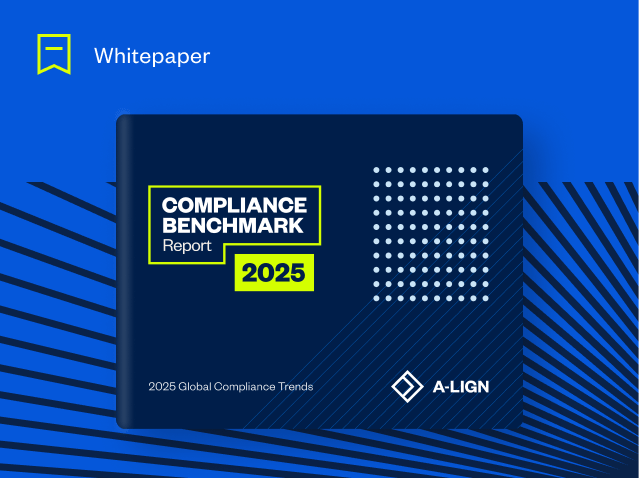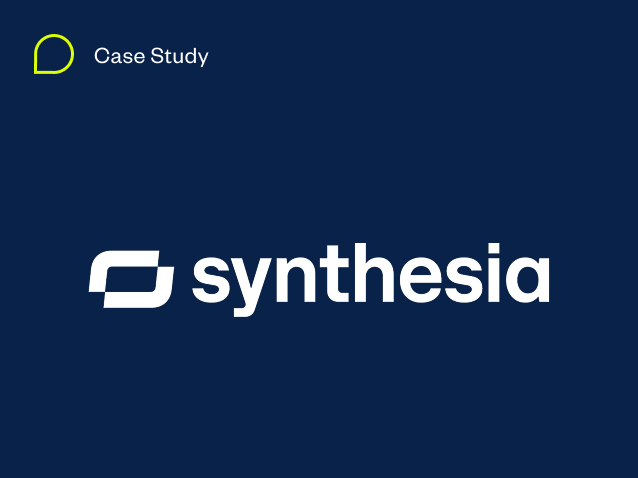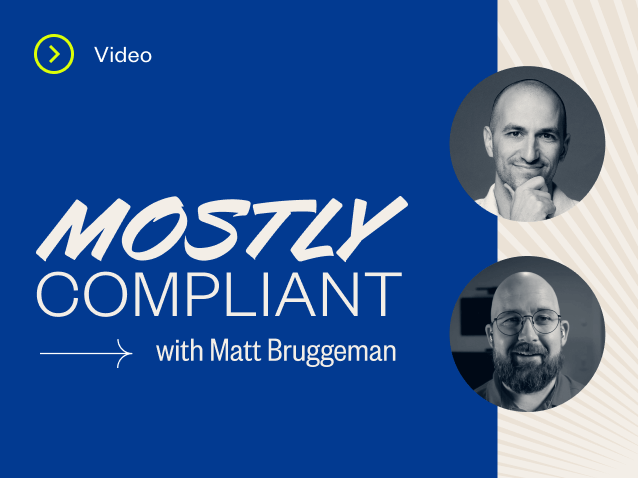Why Are Penetration Tests Important?
How do you measure the effectiveness of your cybersecurity program? Ask this question of a dozen CISOs and you’ll likely get twelve different answers. That’s because there’s no one-size-fits-all approach to measuring security but a penetration test plays into the most effective cybersecurity strategies.
While there may not be a single “right” way of measuring your cybersecurity program, one thing is for certain: creating and maintaining a strong cybersecurity posture requires a tactical and proactive mindset. And one of the best ways to stay a step ahead of clever threat actors is to simulate realistic network attacks with a penetration test, frequently referred to as a “pen test.”
This method of ethical hacking is designed to test the information security safeguards in place at your organization. By doing so, you gain insight into existing vulnerabilities or gaps in your cybersecurity program that could lead to a data breach or security incident.
Why pen tests?
Cybersecurity breaches can disrupt operations, damage reputations, and lead to costly fines or lawsuits. Penetration testing serves as a preventative measure, helping organizations identify and address potential weaknesses.
We recommend that any organization that has a web application conduct regulation penetration tests. Running an application where customers are inputting data and not testing it is irresponsible. Here’s why pen tests are vital:
Identifying vulnerabilities before attackers do
Hackers are constantly developing new methods and tools to exploit weaknesses in networks, applications, and systems. Regular penetration tests expose vulnerabilities such as misconfigured firewalls, outdated software, or weak authentication protocols, allowing you to fix them before attackers can take advantage. By conducting penetration tests, your organization can reduce its attack surface and make fully informed decisions about improving security.
Protecting sensitive data and maintaining customer trust
Data breaches don’t just compromise internal operations—they impact customers too. When personal data is exposed, it erodes customer trust and loyalty. High-profile breaches, like those targeting major retailers or financial institutions, often lead to public fallout and declining customer confidence.
Pen testing ensures weaknesses in systems handling sensitive information, such as credit card numbers, health records, or proprietary data, are proactively identified and mitigated. This practice also reinforces your reputation as a business dedicated to security and professionalism.
Meeting compliance requirements and avoiding penalties
Regulations like GDPR, HIPAA, PCI DSS, and ISO 27001 often require companies to conduct regular penetration tests. Compliance ensures your business adheres to stringent security requirements and avoids costly penalties associated with data breaches or non-compliance.
For example:
- GDPR fines can reach €20 million or 4% of annual turnover, whichever is higher.
- Companies out of compliance with PCI DSS could face fines between $5,000 and $100,000 per month.
Regular penetration testing not only satisfies regulatory obligations but also demonstrates security due diligence to customers, partners, and investors.
Improving incident response capabilities
Penetration tests don’t just uncover vulnerabilities—they refine your ability to respond to potential attacks. They can simulate real threats to evaluate how your incident response team performs under pressure. By identifying weaknesses in your response plans, you can fine-tune and strengthen them to minimize damage in the future.
Bad actors are growing in complexity
Attackers are growing in size and complexity, making it all the more likely that they could target your company. Consider just a few high-profile data breaches from 2024:
- Change Healthcare experienced a ransomware attack in February 2024 in which it allegedly paid attackers a $22 million ransom to gain access to its systems, which were restored over a month later. Attackers targeted a Citrix remote access portal that did not require multi-factor authentication. The attack resulted in major pharmacy chains and other healthcare organizations facing disruptions for multiple days when it came to billing, prescribing medication, and health claims.
- In May 2024, Ticketmaster disclosed a cyberattack that exposed customer information, payment details, and personal data to hackers. Attackers listed a batch of 560 million Ticketmaster customers for sale on the dark web for $500,000 one week after the attack.
- The medical insurance information of 954,000 people was exposed by a data breach at Young Consulting in April 2024. The software company experienced technical difficulties within its computer environment and later determined that an unauthorized actor gained access to its network for three days leading up to those difficulties and downloaded copies of files.
These breaches expose customer data, shut down internal systems, and cause loss of trust among customers.
Why should organizations invest in a pen test?
A well-executed pen test offers your team insights into weak and exploitable points within the organization, and how to remediate them to increase your security posture.
Benefits of conducting regular pen tests include:
- Assessing your organization’s information security of technologies, systems and people (social engineering)
- Identifying vulnerabilities in your security posture before attackers do
- Helping your organization achieve and maintain compliance
- Giving your team insight into your organization’s true threat surface from an external hacker’s or rogue insider’s perspective
While certain compliance frameworks require an organization to conduct a pen test once a year, the reality is that new attack vectors pop up constantly. That’s why an annual pen test likely isn’t enough to ensure your organization is well protected against the latest threats. Additional assessments, like a ransomware preparedness assessment, continuous scanning or vulnerability assessments are often important ways to continue to stress test your organization’s cyber resilience.
Ransomware preparedness assessment
Ransomware attacks are more prevalent than ever, with bad actors demanding large sums of money to release their hold on organizations and their data. At A-LIGN, we offer a ransomware preparedness assessment, which includes a comprehensive review of your infrastructure and processes, real-world ransomware simulations, and a full pen test, all with the goal of reducing the likelihood that your organization will fall victim to this type of attack.
Vulnerability assessment
Every organization today, regardless of size or industry, is adding new endpoints and constantly provisioning new software. This emphasizes why making scheduled vulnerability scans an important part of every security program. Our vulnerability assessment scans map out threat surfaces and known weaknesses for your team before malicious actors can take advantage of them.
Worth noting is that a vulnerability assessment is a means of detection; it tests an organization’s network and systems for known vulnerabilities. When paired with a pen test—which takes a preventative approach—you increase your visibility into weak spots and gaps across your network. This enables organizations to take a more proactive approach to enhancing their security posture.
What type of pen test is right for my organization?
A comprehensive pen test should examine all relevant facets of your cybersecurity controls. At A-LIGN, there are six different components of our pen tests:
Network layer testing: We perform network layer testing using a comprehensive (host-by-host or port-by-port) or targeted (goal-driven) approach.
Web application testing: Our team profiles and targets weaknesses that are inherent in the development of proprietary and custom web applications. Our web application testing includes an in-depth manual review of vulnerabilities designed in the OWASP Top 10 and the SANS Top 20.
Mobile application testing: We use tooling and years of professional experience to capture traffic, analyze your application, and exploit weaknesses and misconfigurations often found in iOS and Android. For this we utilize the OWASP Top 10 for Mobile.
Wireless network testing: We perform a detailed analysis of your organization’s wireless infrastructure using innovative tooling and proprietary tactics.
Email phishing, phone vishing, and facility penetration testing: Whether you want to assess how susceptible your organization is to advanced entry tactics or want to evaluate employee security awareness, we’ll create a customized assessment to meet your testing goals.
Ready to schedule your pen test?
Pen tests are an important part of any risk management strategy. As attackers grow in size and complexity, there’s no better time to schedule a pen test to ensure your organization is protected against the latest threats.
A-LIGN’s OSEE, OSCE, and OSCP-certified pen testers emulate the techniques of actual attackers. We will create scenarios and strategies unique to your organization in an attempt to breach your networks and applications, with the ultimate goal of helping you improve your security posture. Ready to get started? Contact us today. your organization in an attempt to breach your networks and applications, with the ultimate goal of helping you improve your security posture.





